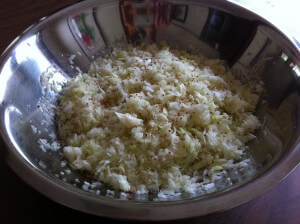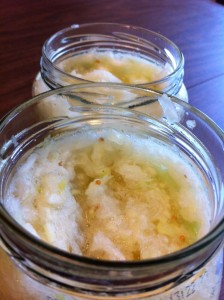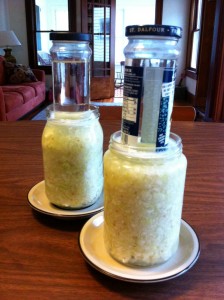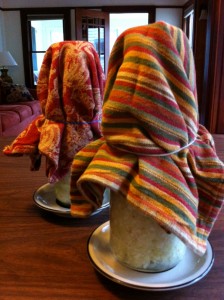Have you ever ventured to make something that you’re used to buying on a regular basis? Let’s say it’s soap. Or hummus. Or salad dressing. For me, this week, it was sauerkraut (aka fermented cabbage). Boy was I scared to make sauerkraut.
My recent post, Miso Hungry, extols the virtues of fermented food and explains why it’s such an important part of a well-balanced digestive system. Honestly, I was scared of doing my own fermenting. Prior to this week, I imagined the process to involve beakers, pricey Williams-Somona-esque tools, major concentration, and small margin of error. I don’t know why. Perhaps I should know better. I’ve always been a fan of pickles and sauerkraut, but I’ve relied on my local supermarket to provide me with the finished product. This is a testament to how detached we can become from our food in a modern world with such easy access to pre-packaged products.
I’m not alone. The cashier at my local supermarket tried to ring up my fresh beets as kale this week. She had never seen a fresh beet and she works at the supermarket. A while back I watched the first season of “Jamie Oliver’s Food Revolution” and was shocked and disturbed to see that first graders were unable to identify common vegetables. Here’s a clip from that particular episode if you’re interested.
But back to fermenting. OH how wrong I was about this process. My colleague, Nishanga Bliss, recently published a book called Real Food All Year, which examines and discusses nutrition through a Chinese medicine lens. Her information and recipes are organized by season, which is so convenient. In fact, the whole-foods cleanse that she recommends in her book is the one that we (meaning the whole office at Family Tree Acupuncture and 20 of our patients) are following right now. The sauerkraut recipe that I used was taken directly from p.48 of her book.
My Route To Saurkraut (As Told In Pictures)
This is practically time-lapse photography. It was that quick to prepare.
I shred one head of cabbage with a box grater and sprinkled the shredded cabbage with 2 teaspoons of sea salt. After letting it sit for a minute, I gave the whole thing a nice massage until the cabbage started salivating (technically, it released some of it’s juice). Once wet, I added a 1.5 teaspoons of mustard seed, which are the little brown specs you can see if you click on the picture below.

I tightly stuffed the cabbage into a large mason jar until the juice rose above the level of the cabbage.

I used a smaller jar (filled with water to provide some weight) to keep the cabbage tucked down into its own juices so it could ferment properly.

I covered each jar with a dish towel and secured the towel using a rubber band. These guys sat on the kitchen counter for three days and, voila!…..sauerkraut. I removed the dish towels and the weighted glass jars, screwed on the lids, and into the fridge they went.

In her book, Nishanga says you can allow your cabbage to ferment unrefrigerated for more than three days, tasting it every day or so until you’ve got it just where you want it.
Eleanor Roosevelt encouraged us to “do one thing every day that scares you.” If, like me, the idea of fermenting your own food gives you the heebie jeebies, I encourage you to face your fears, reconnect with your food and start shredding. Your digestion and your hot dogs (the organic, nitrate-free variety, of course) will thank you.







